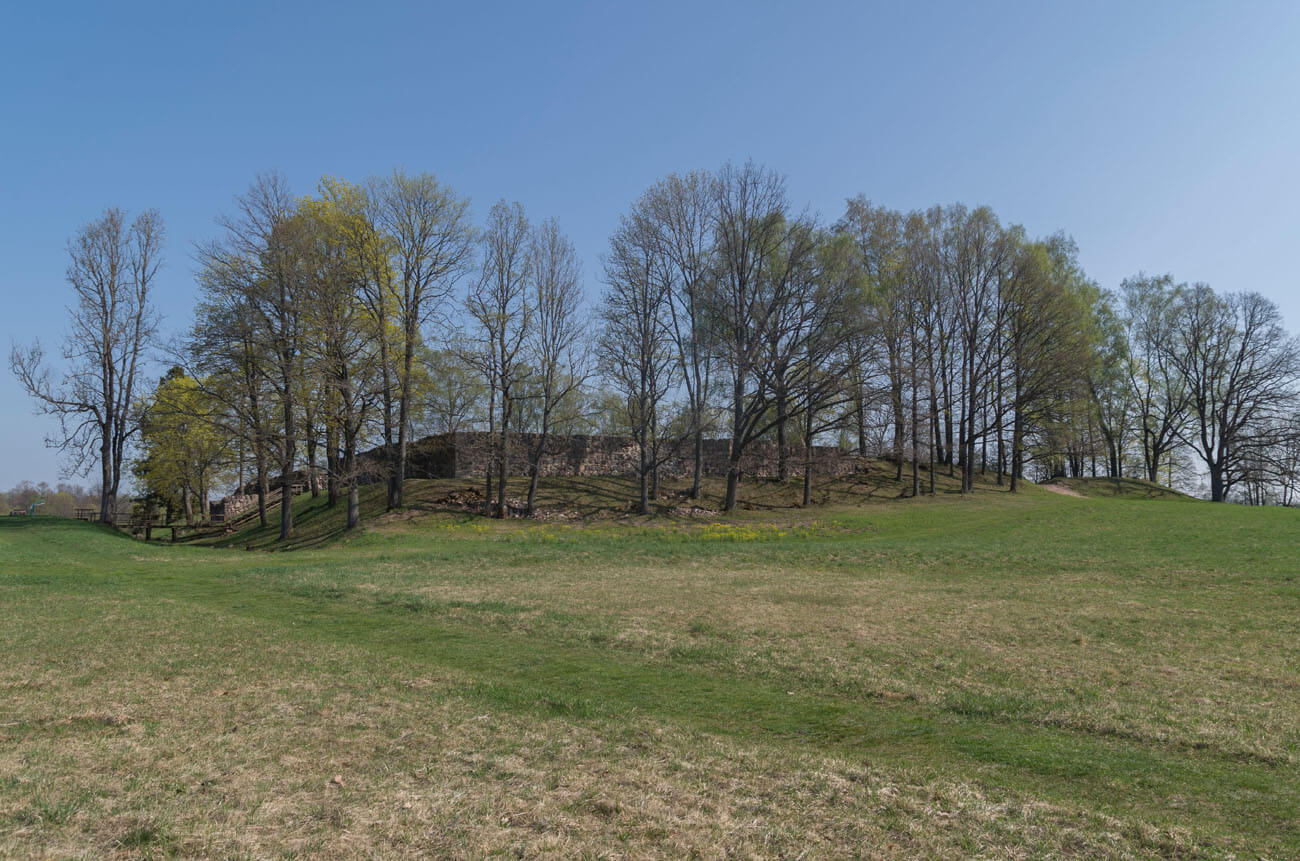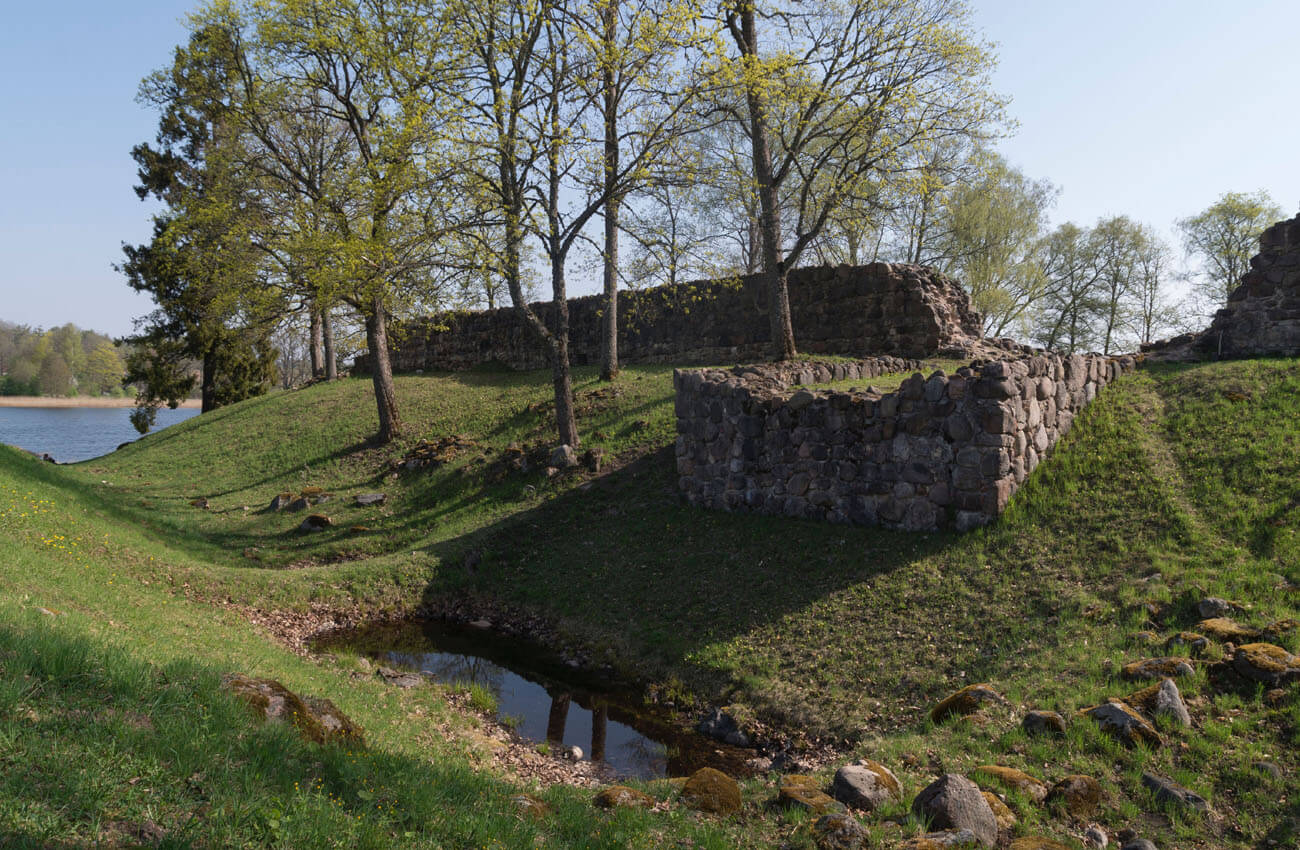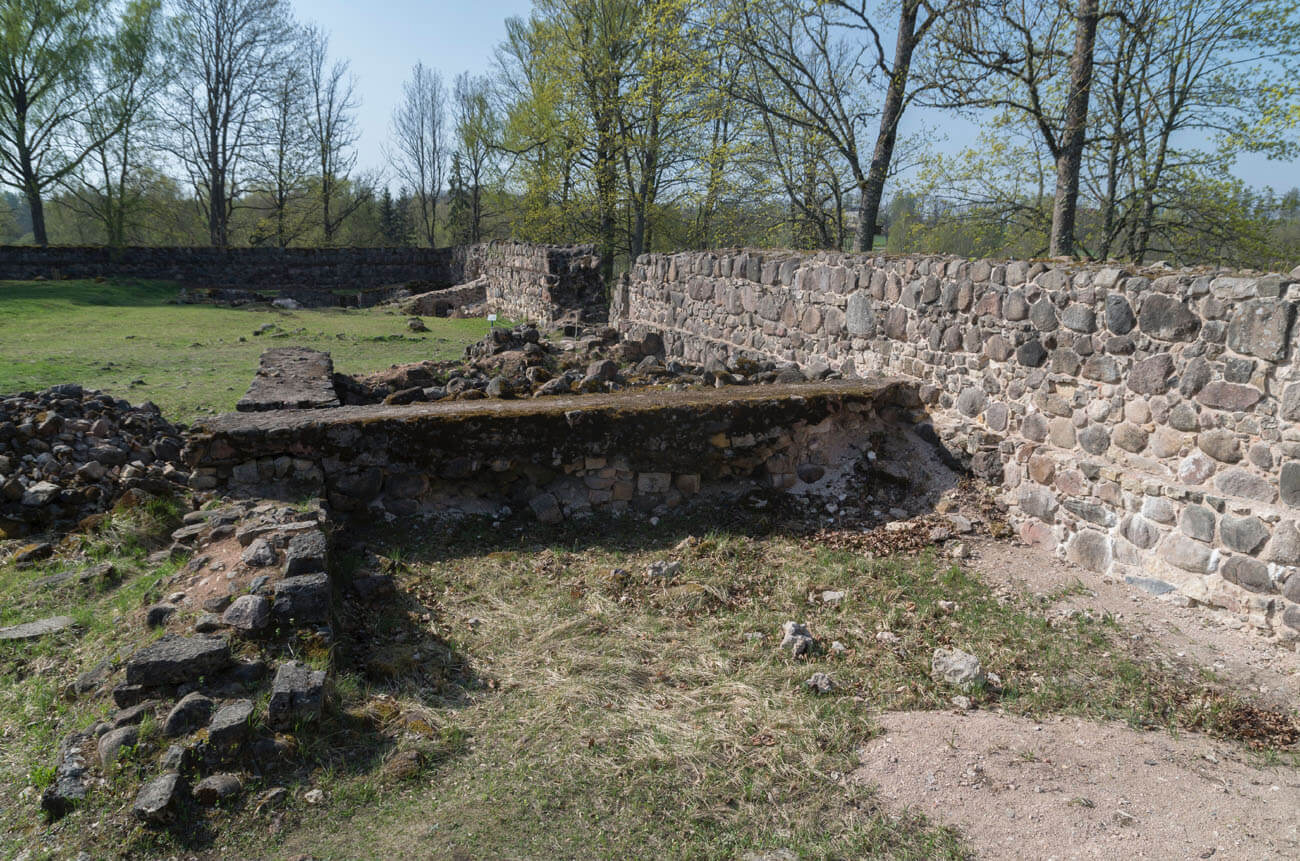History
The castle was built around the mid-14th century to protect the conquered lands against Lithuanian raids. It was first recorded in documents in 1410 as Arries, later it was mentioned under the name Arias. It was subject to the commandry in Wenden, and in the 15th century it was under the direct administrative authority of the Livonian Masters of the Teutonic Order. During the Livonian War, in 1577 it was captured by the troops of Ivan the Terrible, but it was recaptured by Polish army. In 1582 it was described as devastated and uninhabited. It was not recorded in the truce in Yam-Zapolsky, but the lands on which it was located were incorporated into the Polish-Lithuanian Commonwealth. The final destruction of the castle was due to the Polish-Swedish wars in the first half of the 17th century.
Architecture
The castle was built on the western shore of Lake Āraiši, on a peninsula with an area of approximately 9 ha. In its north-eastern end there was the main part of the castle, measuring approximately 72 x 81 meters, built on a square-like plan, with a spacious courtyard surrounded by a defensive wall approximately 5 meters high. The entrance to the castle was through a four-sided gatehouse, which protruded in front of the curtains and was located in the middle of the western facade. In front of it lay the unfortified outer bailey.
The north-west and south-west sides of the courtyard were occupied by residential buildings. The north-west building was larger, rectangular in plan, with a basement, three-space, with rooms heated by a hypocaust furnace. Moreover, in the courtyard there were numerous wooden or half-timbered buildings for economic purposes, attached to the inner faces of the defensive wall.
Current state
The lower parts of the defensive wall have been preserved to this day, visible on a large part of the perimeter, as well as modest relics of internal buildings and the base of the gatehouse, protruding into the still visible moat. The entrance to the ruins is combined with admission to the archaeological open-air museum, where you can visit a reconstructed early medieval Latgalian settlement and a group of buildings modeled on Bronze Age dwellings.
bibliography:
Borowski T., Miasta, zamki i klasztory. Inflanty, Warszawa 2010.
Herrmann C., Burgen in Livland, Petersberg 2023.
Tuulse A., Die Burgen in Estland und Lettland, Dorpat 1942.




